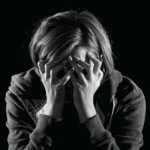 Risk of Mortality from SLE
Risk of Mortality from SLE
By Ansaam Daoud, MD, Loai Dweik, MD, & Omer Pamuk, MD
Why was this study done? Systemic lupus erythematosus (SLE) is a chronic autoimmune disease with significant mortality, particularly affecting racial and ethnic minorities. This study aimed to assess national SLE mortality trends over the past two decades, stratified by sex, race, ethnicity and geography, using U.S. Centers for Disease Control and Prevention (CDC) mortality data.
What were the study methods? Using the CDC Wide-Ranging Online Data for Epidemiologic Research (WONDER) Multiple Cause of Death database, the researchers analyzed SLE-related deaths from 1999 to 2020. Age-adjusted mortality rates (AAMRS) were calculated for sex, race, ethnicity and state. Linear regression models were applied to assess trends over time, and geographic mortality distributions were mapped. Joinpoint regression analysis was performed to detect significant shifts in mortality trends over time.
What were the key findings? From 1999 to 2020, 27,213 SLE-related deaths were recorded in the U.S. Women had a significantly higher AAMR (6.21 per million; 95% confidence interval [CI] 6.13-6.29) than men (1.20 per million; 95% CI 1.16-1.24). Black Americans experienced the highest AAMR (10.7 per million; 95% CI 10.48-10.92), particularly Black women (17.68 per million; 95% CI 17.29- 18.06). Despite an overall decline in SLE mortality ($R^2=0.902$), racial and regional disparities persisted, with mortality disproportionately concentrated in Southern states and among Black women.
Notably, the Hispanic population, which had a higher AAMR than non-Hispanic populations in 1999, demonstrated significant improvements in mortality outcomes over time. By 2020, that group’s AAMR had declined to a level lower than that of the non-Hispanic population.
What were the main conclusions? Over the past two decades, SLE-related mortality has steadily declined across all demographic groups. However, Black Americans especially women-continue to experience disproportionately high mortality rates. Additionally, Southern states have higher SLE mortality than other regions. Encouragingly, the Hispanic population saw a notable improvement in mortality rates over time, surpassing non-Hispanic groups in reduced AAMR.
What are the implications for patients and clinicians? Despite advances in SLE management, significant racial and regional disparities in mortality persist. Further studies are needed to understand the underlying mechanisms contributing to the disproportionately increased SLE mortality rates. Meanwhile, the positive trend in the Hispanic population highlights the potential benefits of improved healthcare access and disease management strategies, warranting further investigation into the contributing factors.
The study: Daoud A, Dweik L., Pamuk O. Temporal trends and demographic insights into mortality from systemic lupus erythematosus, 1999-2020. Arthritis Care Res (Hoboken). 2025. Early view.


